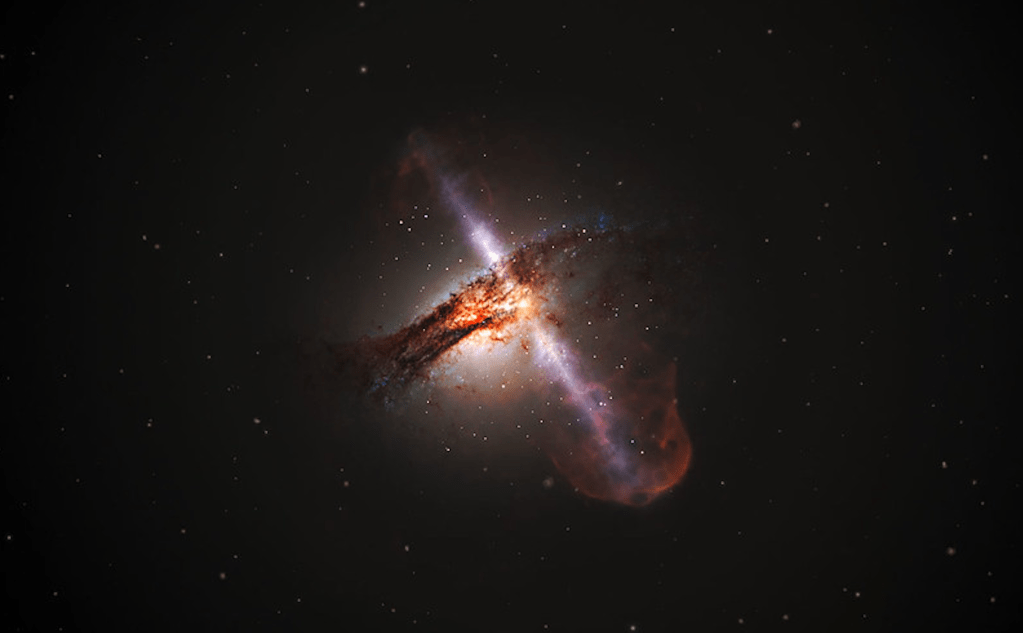Some 160,000 light years away, deep within the Tarantula Nebula, two massive stars are leaning in for a hot and heavy cosmic kiss.
This isn’t your standard binary star system, in which stars keep a respectful distance from each other. No, the newly discovered system, dubbed VFTS 352, contains stars that dance in such a tight gravitational embrace that they actually overlap, like a three-dimensional Venn Diagram. About 30 percent of the pair’s material is shared within an interstellar envelope that has formed between the stars as they have spiraled ever closer to each other, the European Southern Observatory (ESO) reported today.
Videos by VICE
Zooming in on VFTS 352. Video: ESO/YouTube
“The VFTS 352 is the best case yet found for a hot and massive double star that may show this kind of internal mixing,” Leonardo A. Almeida, lead author of a study about VFTS 352, said in an ESO statement. “As such it’s a fascinating and important discovery.”
What’s more, this pair of literally star-crossed lovers also happens to be the hottest and most massive example of these rare systems, called “overcontact binaries,” ever discovered. Together, the two supermassive stars weigh in at about 57 solar masses, with surface temperatures that can reach an unfathomable 40,000 degrees Celsius. The Sun’s surface is, by comparison, a balmy 5,500 degrees Celsius.
Indeed, it looks as if this highly combustible relationship is headed for a pyrotechnic fate. Almeida’s team predicts two ways that it might go down: either VFTS 352’s stars will stay slightly separated in a double star system, or they will merge completely into one rapidly spinning, unstable behemoth, akin to a Wolf-Rayet star.
Animation of VFTS 352 interaction. Video: ESO/YouTube
Either way, the stars will detonate together, but if they remain separate, they will leave a binary black hole system in their wake. If they merge, however, they will explode in such unhinged glory that they may create a gamma ray burst—one of the most energetic events in the Universe. So romantic.
Regardless of the pair’s ultimate fate, the discovery, made by the ESO-operated Very Large Telescope in Chile, has given scientists an unusual glimpse into these tumultuous overcontact binaries. These systems are thought to be key creators of important elements, like oxygen, so understanding inner dynamics could shed light on all kinds of questions about galactic evolution.
But let’s be honest, the real story is that two bonkers-huge stars are about to give each other the kiss of death in one way or another, and that is a straight-up mind-boggler. Romeo and Juliet, eat your heart out.



